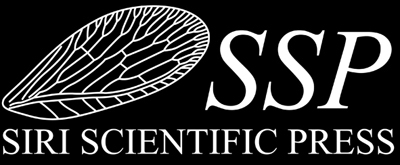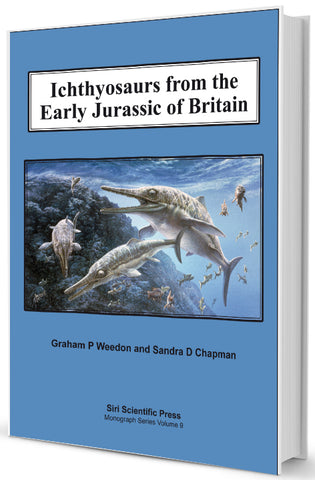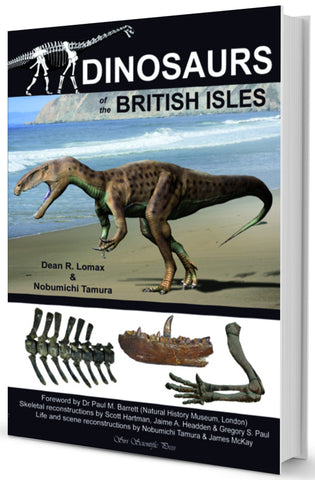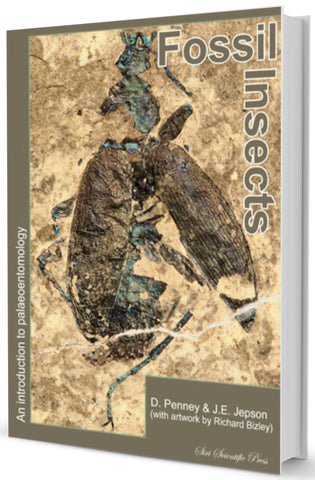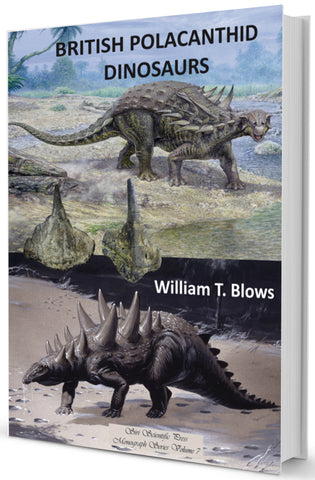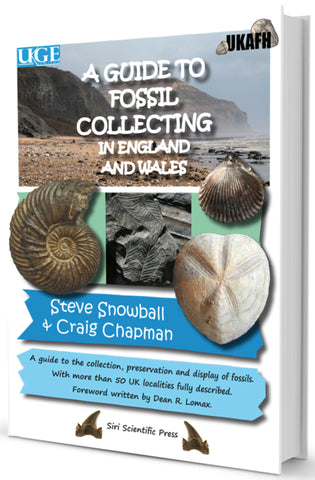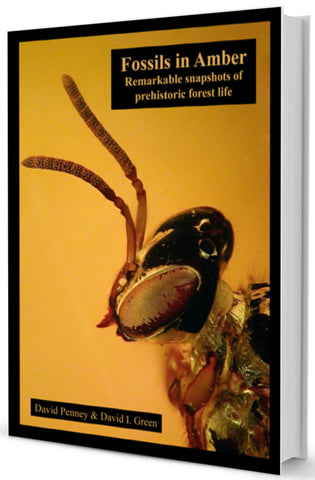
Fossils in Amber: Remarkable Snapshots of Prehistoric Forest Life
by David Penney and David I. Green
Siri Scientific Press (2011) 978-0-9558636-6-0 RRP £35.00
226 pp, 210 x 150 mm, soft cover, 127 colour photos
IN STOCK - Ships Within 24 Hours
Reviews
"This book has opened up a ‘whole new world’ in the study of insects in amber. The photographs show incredible detail and clarity, and this book is a ‘must have’ for anyone interested in amber inclusions." BD Roberts, Geology Superstore
Antenna (2011): There are many books on fossils in amber, but few can claim to be packed with visually stunning photographs, which is where the current work stands out from the rest. ... Fossils in Amber: Remarkable snapshots of prehistoric forest life is a well written and spectacular visual guide to amber palaeontology, combining the different talents of the two authors; Dr David Penney is a world renowned amber palaeobiologist and Dr David Green is a highly skilled expert in photomicroscopy. It is fully referenced throughout and written in a clear, easily understandable manner, which makes it accessible to amateurs as well as professionals. It should have a broad appeal, and will be of interest to both amateur and professional entomologists, palaeontologists and anyone interested in natural history and photography, or to those with a general interest in amber.
From the back cover
Fossils preserved in amber provide us with a unique insight into the biodiversity and ecology of long extinct tropical forests. Today, similar habitats contain a major proportion of the planet’s biodiversity, although they are disappearing at an alarmingly rapid rate, primarily as a result of human activities such as deforestation. The hot, humid environments of these habitats in conjunction with the vast armies of decomposers and other recyclers limit the potential for fossilization in the traditional sense. Hence, fossils in amber represent an invaluable resource for reconstructing tropical forest palaeoecosystems and for understanding global change over extended time periods. The degree of amber preservation is so exquisite that even minute structural details of fragile insects and other arthropods that are millions of years old are clearly visible. Indeed, some are preserved with such life-like fidelity that their immediate demise following encapsulation in the sticky resin provides us with snapshots of fossilized behaviours. These include mating, egg laying, parasitism, feeding and predation to name but a few. Technological developments and the application of advanced imaging methodologies to these fossils means that we can now extract more information than ever before. Not only is this useful from a scientific perspective, but it also means that the true magnificence and beauty of the inclusions can be reproduced and appreciated by all, rather than just a scientist looking down a microscope.
In this book the authors combine their individual skills to bring some of the world’s best preserved and unusual specimens into the public domain. Dr David Penney of the Faculty of Life Sciences, University of Manchester is a renowned amber palaeobiologist, Dr David Green is an honorary researcher at the University of Manchester and the National Museum Wales and an expert in photomicroscopy. The result is a spectacular collection of photographs combined with authoritative text, covering all the arthropod orders likely to be encountered as fossils in amber. In addition to explaining how best to photograph amber inclusions, the accompanying text provides interesting background information regarding identification, biology and palaeontology of the figured specimens.
Addendum
The ceratopogonid fly on page 207 belongs in the genus Forcipomyia not Culicoides. We are grateful to the leading world expert on this group, Dr Art Borkent (BC, Canada) for spotting this error and bringing it to our attention.
We Also Recommend
